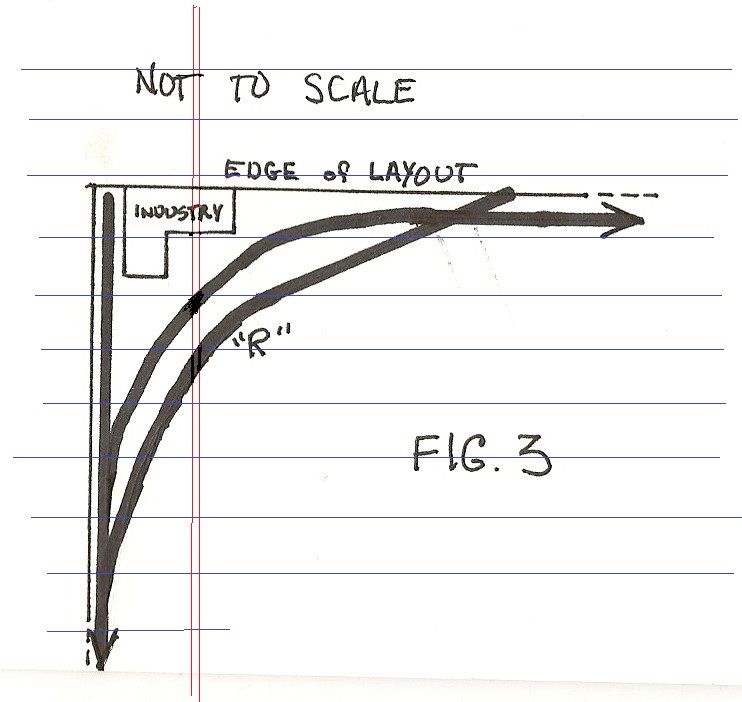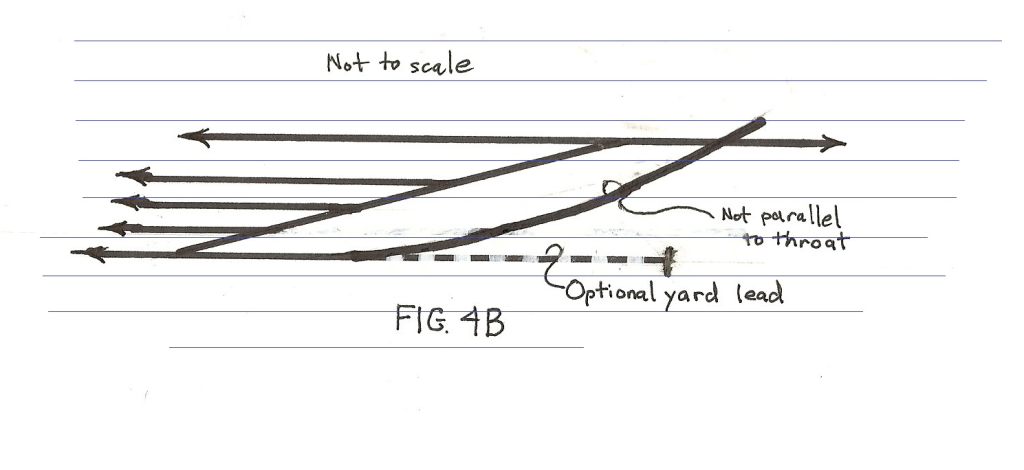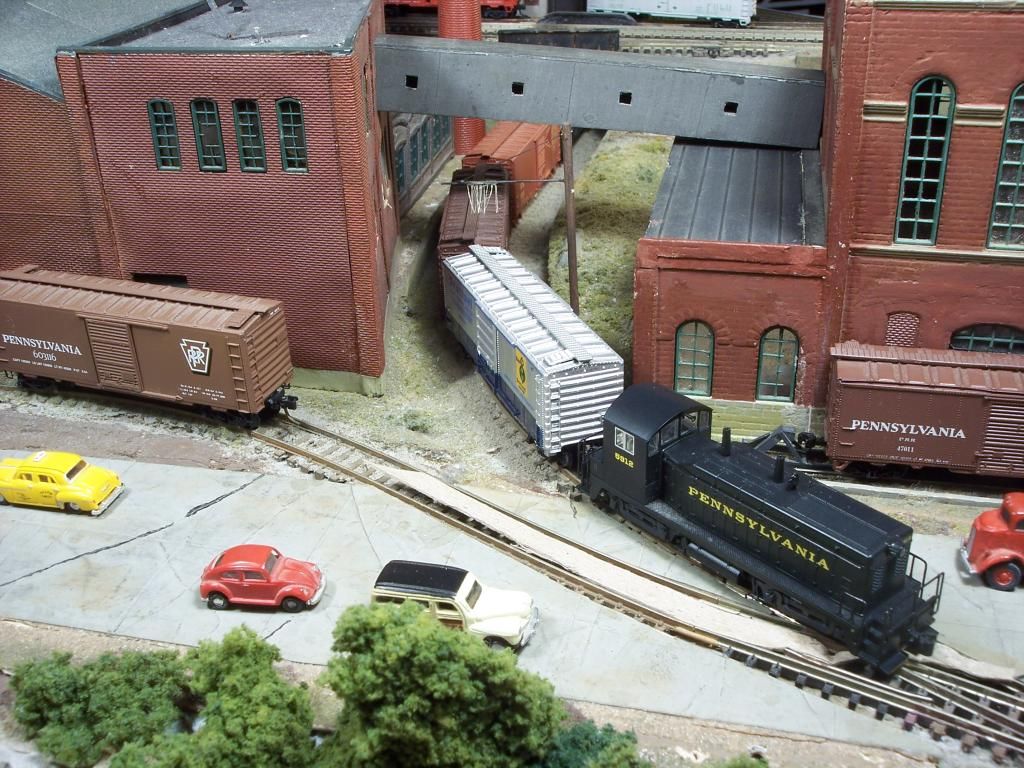Open-air interchange tracks (as opposed to hidden ones) should be easy, versatile additions to any track plan. But in the crowded worlds of our layouts it’s not always easy to add one that looks convincing. To copy exactly the actual trackage of a prototype would eat up a lot of space if we wanted to have the track hold four or more cars.

For a more compact scene, you can eliminate the other railroad’s track, including its connecting turnout. But then, you’re got what looks like just a spur without an industry.
The trick is to squeeze interchange into places on the layout that would otherwise have scenic filler, or worse, empty space. Let’s call these “spacesaver interchanges”. It calls for looking at our layouts differently than we usually do.
A layout corner where the mainline curves at least 90 degrees – and almost every layout has these – is usually a great place to stick in a small industry and a turnout off the curve to serve it. But it’s also where instead you can squeeze in an interchange track and a bit of dummy main from the other railroad. By branching off the mainline arc with a curved turnout, you can get a decent-sized place to park cars all the way from your main to the edge of the layout.

Usually that means you can squeeze more cars on this track than the usual industry track with spotting points only at a dock or loader. Plus you can give the interchange its own scenically distinct area by adding a hint of the other railroad. Placing the connecting dummy mainline at an angle also breaks up the right-angle lines of the layout corner. With different ballast, a drainage ditch, telegraph poles and maybe a dummy signal along the “other” road, this makes an open but interesting scene that fits either a rural or industrial layout and avoids the “orphan spur” look.
If that’s not meaty enough or you want to have an actual crossing, here’s a version to fit in a curved corner

This interchange runs off the inside of the curving main, paralleling it for a bit before straightening out to cross back over the main at a dummy (or real, if you choose) diamond. The interchange track radius “R” should be the mainline radius minus your scale’s track-to-track center spacing. Even if you have bare-minimum mainline radii, the tighter radius of the interchange should not be a problem since only freight cars will be parked on that section between crossing and turnout. This version leaves the outside corner open for an industry or station.
If other priorities have claimed your layout’s corners and inside curves of main lines – or you just ran out of space – you can still have a distinctive interchange that doesn’t take much room. This version is best suited for a yard set at an angle from the main and close to the layout edge.

Here the interchange splits off as a switchback from the last (shortest) yard track. To make it look like a “foreign” track, put a slight curve into it so it doesn’t parallel any other yard track. Use a dummy diamond at the crossing with the main. If you have only a few interchange cars, they can be parked on either the interchange or its yard track. When you have more cars, you use both tracks, which involves more complicated switching and car placement so you don’t foul either the main or the yard throat. For a really long interchange track, you can make it a live crossing over the main and curve the interchange to follow along but outside the main (“D”). If this means running along the edge of the layout it’s a risky place to have rolling stock, unless the track’s right next to a backdrop or a low barrier fastened to the layout edge. The interchange’s diamond and track matching the main in rail size, ballast, height and level of maintenance keep it from looking like a spur without an industry.
This plan can be modified for yards parallel to the main, too.

Again, the interchange curves just a tad so it looks like a “foreign” track before it crosses the main. As in the first version, there’s the option of live crossing and extended track. For a third option, if you have an industry spur that comes off the yard (shown as dotted line), you can branch an interchange off there to cross the main.
Another idea is to disguise interchange tracks or use them for double duty. This works best in crowded industrial areas

Here the track with the switcher and cars is curved to save space, get more length and help visually separate the factories, whose spurs connect from another part of the line. Though scenicked to give the illusion of a through mainline, in fact it ends just past the underpass, and used both as one end of a runaround siding and as an interchange that can hold several cars.